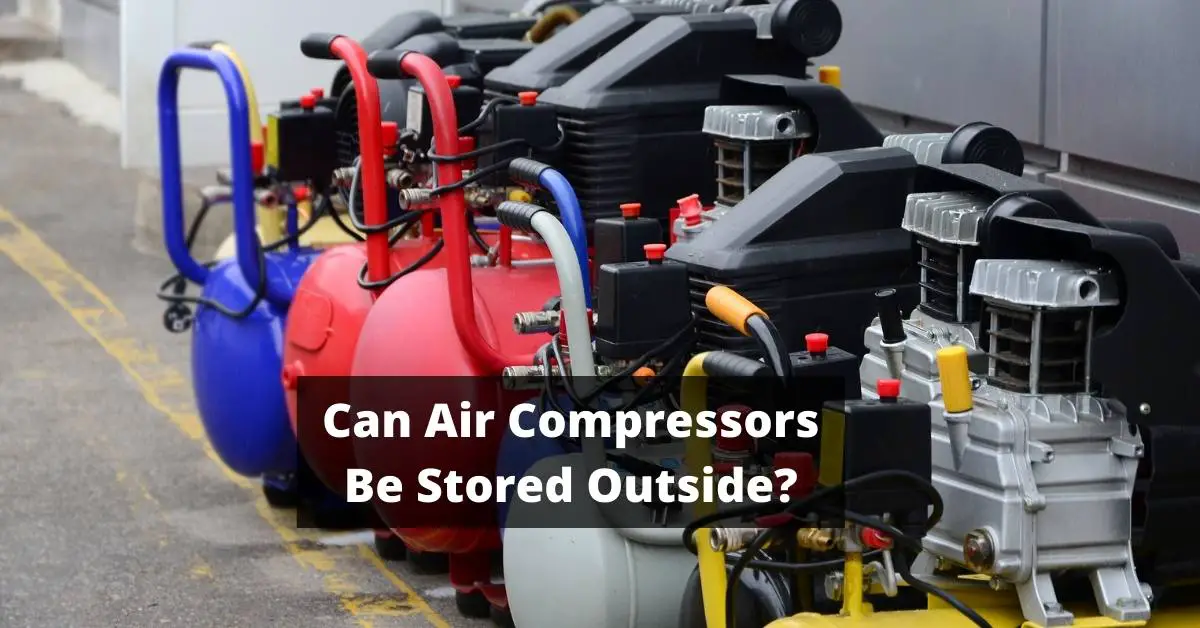Have you just purchased a Blue Hawk air compressor and are wondering how to use it? Look no further! As someone who has been using air compressors for years, I’m excited to share my knowledge with you on how to properly operate your new tool.
First things first, let’s get familiar with the components of the Blue Hawk air compressor. It’s important to understand each part and its function before attempting to use it. Don’t worry if this seems overwhelming at first, with a little practice and patience, you’ll be using your air compressor like a pro in no time!
So, let’s dive in and get started.
Familiarize Yourself with the Components of the Blue Hawk Air Compressor
As you start exploring the ins and outs of this powerful machine, take some time to get acquainted with all the individual parts that work together seamlessly to make your tasks a breeze. The Blue Hawk air compressor is an intricate piece of machinery that consists of several components.
These components include the tank, motor, pressure switch, regulator, gauges, safety valve, and hose connectors. Each part plays a vital role in ensuring that the compressor functions at its best.
The tank is where compressed air is stored and released when needed. It comes in various sizes depending on the model you choose. The motor powers up the compressor’s pump which draws in air from outside and compresses it into the tank.
The pressure switch regulates how much pressure builds up inside the tank while the regulator controls how much pressure gets released through the hose connectors. To ensure safe operation of your Blue Hawk air compressor, it’s essential to understand what each component does and how they all work together.
Familiarizing yourself with these details will help you troubleshoot any problems that may arise down the line as well as maximize performance levels for optimal results. Now that we’ve covered all about the components, let’s move on to choosing the right location for your Blue Hawk air compressor without wasting another second!
Choose the Right Location for Your Blue Hawk Air Compressor
When setting up my Blue Hawk air compressor, I always make sure to choose the right location. It’s important to ensure proper ventilation in the area where you’ll be using the compressor to prevent any potential hazards or damage.
Finding a stable surface is crucial for the safe and efficient operation of the machine.
Ensure Proper Ventilation
To prevent any potential accidents, make sure the area where you operate your compressor is well-ventilated – just like how a healthy body needs fresh air to function properly. Proper ventilation helps dissipate heat generated by the compressor, preventing it from overheating. This is especially important if you plan on using the compressor for extended periods of time.
When setting up your Blue Hawk Air Compressor, ensure that there aren’t any obstructions blocking the air vents and that there’s enough clearance around them to allow proper airflow. You should also avoid operating your compressor in areas with high humidity or near flammable materials as this can cause damage to both the compressor and surrounding objects.
With proper ventilation, you can ensure that your Blue Hawk Air Compressor operates efficiently and safely throughout its lifespan.
To find a stable surface for your Blue Hawk Air Compressor, consider using a sturdy workbench or table that can support its weight without wobbling or tipping over.
Find a Stable Surface
Make sure you find a sturdy surface that won’t wobble or tip over for your Blue Hawk air compressor. It’s important to have a stable base so you can work with ease and avoid any potential accidents.
The surface should be level, flat, and able to withstand the weight of the compressor. I recommend using a concrete floor or heavy-duty table as they’re generally the most stable options.
Once you’ve found a suitable surface, ensure it’s clean and free from debris before placing your compressor on top of it. This will prevent any dirt or dust particles from entering your machine and potentially causing damage to its components.
With your Blue Hawk air compressor now situated on a stable surface, you can move on to preparing it for use by following these simple steps…
Prepare Your Air Compressor for Use
Before you start working, it’s important to properly prepare your equipment so that it runs smoothly and efficiently. This means taking the time to check if your Blue Hawk air compressor is clean, well-maintained, and has enough oil.
Start by checking the air filter for any dirt or debris that may obstruct the airflow. Clean or replace it if necessary to ensure maximum efficiency.
Next, inspect the pressure switch and make sure that it’s adjusted correctly according to your needs. The pressure switch is responsible for turning on and off the compressor when a certain pressure level is reached. Ensure that all electrical connections are secure before plugging in your unit.
Finally, check the power cord for any signs of damage such as frayed wires or loose connections.
Once you’ve checked everything thoroughly and made sure everything is in order, plug in your Blue Hawk air compressor and allow it to build up pressure until it reaches its maximum capacity. When ready to use, connect your hose and turn on the regulator valve according to your desired settings. Remember always to wear protective gear such as safety glasses and earplugs while operating an air compressor.
As you begin using your Blue Hawk air compressor safely, keep in mind that proper maintenance is key to ensuring its longevity. Regularly check for leaks, drain moisture from the tank after each use, and store it in a dry place away from direct sunlight or extreme temperatures. By following these steps carefully, you’ll be able to enjoy efficient performance from your Blue Hawk air compressor for years to come!
Operate Your Blue Hawk Air Compressor Safely
You need to operate your compressor with extreme caution, or you risk endangering yourself and others around you! Before turning on the power switch, make sure the pressure gauge reads zero. Check all connections for leaks or damage before using it.
If everything looks good, plug the compressor into a grounded electrical outlet and turn it on.
When using your Blue Hawk air compressor, be sure to wear eye and ear protection. The noise level can be quite high, and debris may fly off at any time. Additionally, keep the area around the compressor clear of any obstacles that might interfere with its proper functioning.
Finally, remember that safety should always come first when using any kind of machinery. Follow these guidelines carefully to ensure that you are operating your Blue Hawk air compressor safely and effectively.
Now that you know how to use your air compressor safely, let’s move on to learning about how to use it for various applications without causing any damage or injury.
Use Your Blue Hawk Air Compressor for Various Applications
Now that we know how to operate our Blue Hawk air compressor safely, it’s time to explore its versatility. This powerful tool is capable of performing a variety of tasks, making it an essential addition to any workshop or garage.
One popular use for the Blue Hawk air compressor is powering pneumatic tools. These tools rely on compressed air to function and can range from impact wrenches and nail guns to spray paint guns and sanders. With the right attachments, your Blue Hawk compressor can be used for all of these jobs and more.
Another application for the Blue Hawk air compressor is inflating tires, sports equipment, and inflatable toys. The built-in pressure gauge makes it easy to monitor the amount of air being pumped into your item, ensuring that you don’t overinflate or underinflate it. This feature also makes it a great choice for filling up larger items like pool floats or air mattresses quickly.
As you become more comfortable using your Blue Hawk air compressor, you may find even more ways to utilize its power. However, if you do encounter any issues along the way, don’t worry! In the next section, we’ll cover some common problems you may run into with your Blue Hawk compressor and how to troubleshoot them effectively.
Troubleshoot Common Problems
Let’s troubleshoot some common issues you may encounter with your trusty tool and get back to using it like a pro!
One of the most common problems that can arise with an air compressor is the lack of pressure. If you notice that your compressor isn’t generating enough pressure, check the air filter first. Make sure it’s clean and free from any debris or dust. If this doesn’t solve the issue, inspect all of the hoses and connections for any leaks or damages.
Another problem that can occur is when your compressor won’t start at all. Before assuming there’s a major issue with the machine, make sure it’s plugged in properly and that there are no tripped breakers. Check if there’s enough oil in the system; low oil levels can cause starting issues as well. Lastly, inspect the unloader valve; if it isn’t functioning correctly, then your compressor won’t start.
Lastly, one other issue to be aware of is when an air compressor won’t stop running even after reaching its maximum pressure level. This could indicate a faulty pressure switch or safety valve. You’ll need to replace either of these parts by following specific instructions in your manual carefully.
Now that we’ve covered how to troubleshoot some common issues, let’s talk about maintenance and storage.
Maintenance and Storage
As I’m wrapping up my work for the day, I like to take a few extra minutes to perform routine maintenance on my Blue Hawk air compressor. This helps me ensure that it’ll continue to run smoothly and reliably for years to come.
One of the most important things I do is check the oil level and add more if necessary. I also clean or replace the air filter as needed, which helps prevent dust and debris from entering the compressor.
Another key aspect of maintaining my Blue Hawk air compressor is storing it properly when not in use. I always make sure to turn off the power and unplug it from any electrical outlets before putting it away. Then, I store it in a dry, cool place where there’s no risk of damage from moisture or extreme temperatures.
By taking these simple steps, I’m able to extend the life of my tool and get better performance out of it every time.
Overall, performing regular maintenance on your Blue Hawk air compressor is essential if you want to keep it running at its best. By following these simple tips and making them part of your daily routine, you can enjoy years of reliable service without having to worry about breakdowns or other problems that could otherwise arise over time.
So if you’re looking for a way to keep your tools in top condition, be sure to give your air compressor some TLC today!
Conclusion
Overall, the Blue Hawk air compressor is a reliable and efficient tool for various tasks. By familiarizing yourself with its components and choosing the right location, you can make the most out of this machine.
Preparing it for use, operating it safely, and using it for different applications are also important aspects to consider.
However, like any other equipment, problems may arise from time to time. One interesting statistic that might surprise you is that, according to a recent study by the Occupational Safety and Health Administration (OSHA), over 20% of workplace accidents are related to compressed air systems.
This alarming number highlights the importance of proper safety measures when using an air compressor. These include wearing eye and ear protection and avoiding pointing the nozzle at anyone or anything. Additionally, regular maintenance and storage are crucial in ensuring your Blue Hawk air compressor remains in good condition.
In conclusion, mastering how to use your Blue Hawk air compressor can save you time and money while getting various jobs done efficiently. Remembering safety precautions along with proper maintenance will ensure your machine runs smoothly and safely every time.



